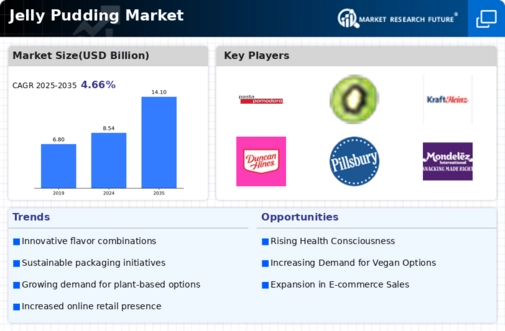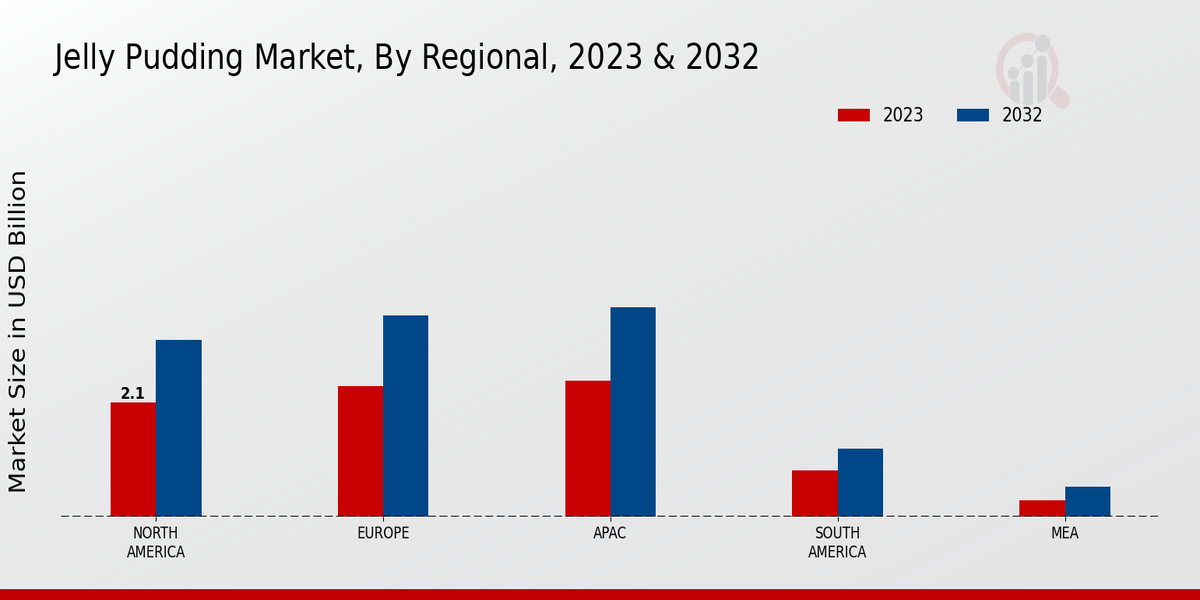Market Growth Projections
The Global Jelly Pudding Market Industry is projected to experience a compound annual growth rate (CAGR) of 4.66% from 2025 to 2035. This growth trajectory is indicative of the increasing popularity of jelly pudding as a dessert option across various demographics. Factors contributing to this growth include rising disposable incomes, changing consumer lifestyles, and the ongoing trend towards indulgent yet convenient food options. As the market evolves, manufacturers are expected to invest in marketing strategies that highlight the unique qualities of their products, further driving consumer interest. The anticipated growth underscores the potential for innovation and expansion within the industry.
Expansion of Distribution Channels
The Global Jelly Pudding Market Industry benefits from the expansion of distribution channels, which enhances product accessibility for consumers. Retailers are increasingly adopting multi-channel strategies, including online platforms, to reach a broader audience. This trend is particularly significant in regions where e-commerce is gaining traction, allowing consumers to purchase jelly pudding from the comfort of their homes. Additionally, partnerships with supermarkets and convenience stores facilitate the availability of various jelly pudding brands. As distribution networks continue to evolve, the market is poised for growth, as consumers are more likely to try new products when they are readily available.
Rising Demand for Convenience Foods
The Global Jelly Pudding Market Industry experiences a notable surge in demand for convenience foods, driven by the fast-paced lifestyle of consumers. As individuals seek quick and easy dessert options, jelly pudding emerges as a popular choice due to its simple preparation and appealing taste. This trend is particularly evident in urban areas where time constraints are prevalent. The market is projected to reach 8.54 USD Billion in 2024, reflecting a growing preference for ready-to-eat products. This shift towards convenience is likely to bolster the industry's growth, as manufacturers innovate to cater to consumer preferences for quick and satisfying dessert solutions.
Cultural Influence on Dessert Preferences
Cultural factors play a pivotal role in shaping dessert preferences within the Global Jelly Pudding Market Industry. In many regions, jelly pudding is a traditional dessert that resonates with local customs and celebrations. This cultural significance drives demand, as consumers seek to connect with their heritage through food. Furthermore, globalization introduces jelly pudding to new markets, where it is often adapted to local tastes and preferences. This cultural exchange not only broadens the consumer base but also encourages innovation in flavors and presentations. As a result, the industry is likely to see continued growth as it taps into diverse cultural influences.
Health Consciousness and Product Innovation
In recent years, there is an increasing awareness regarding health and nutrition among consumers, which influences their purchasing decisions in the Global Jelly Pudding Market Industry. Manufacturers are responding to this trend by developing healthier variants of jelly pudding, such as low-sugar and organic options. This innovation not only caters to health-conscious consumers but also aligns with dietary trends that emphasize natural ingredients. The introduction of functional ingredients, such as probiotics, further enhances the appeal of jelly pudding. As a result, the industry is likely to witness sustained growth, potentially reaching 14.1 USD Billion by 2035, as consumers gravitate towards products that combine indulgence with health benefits.























Leave a Comment